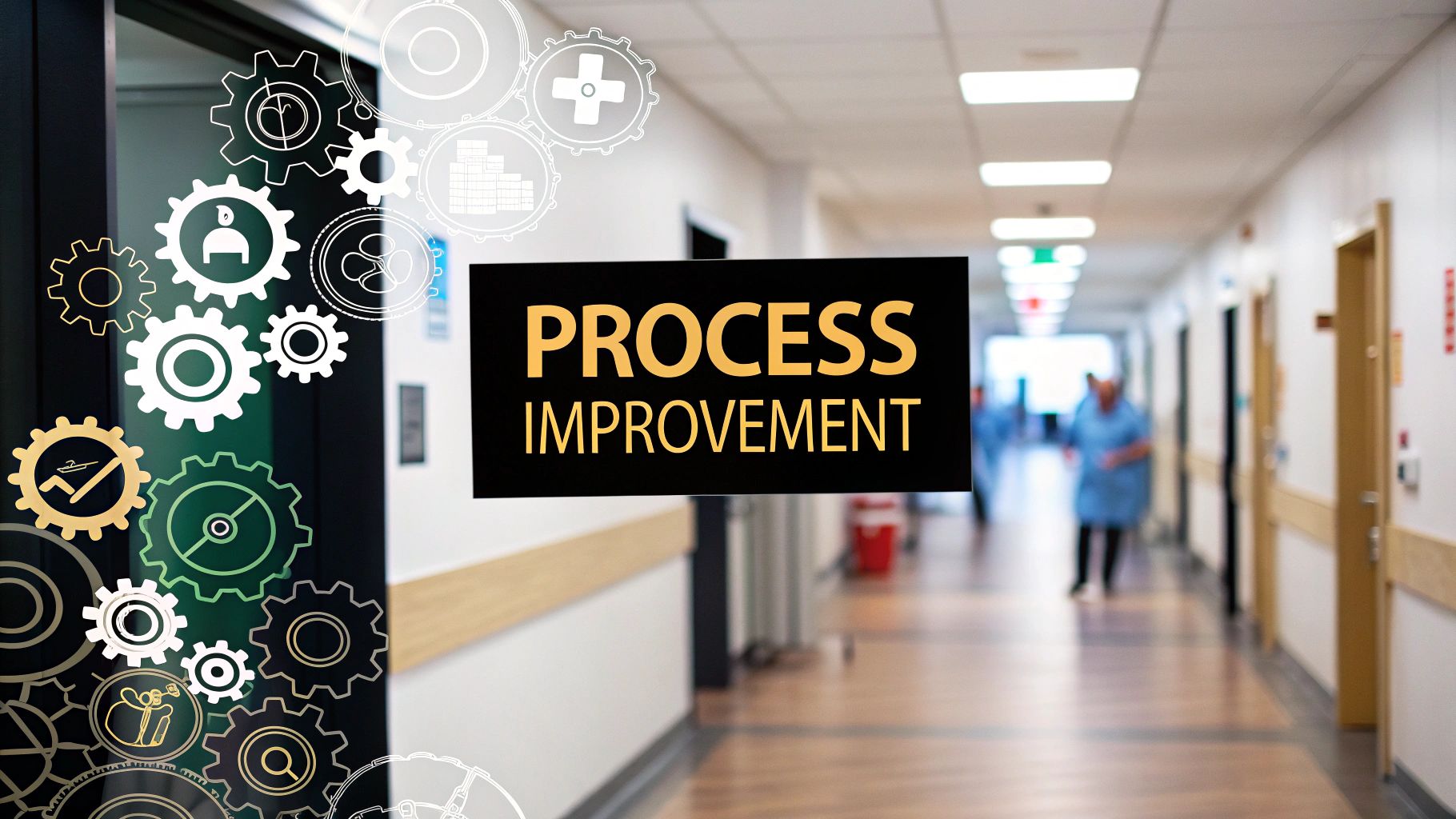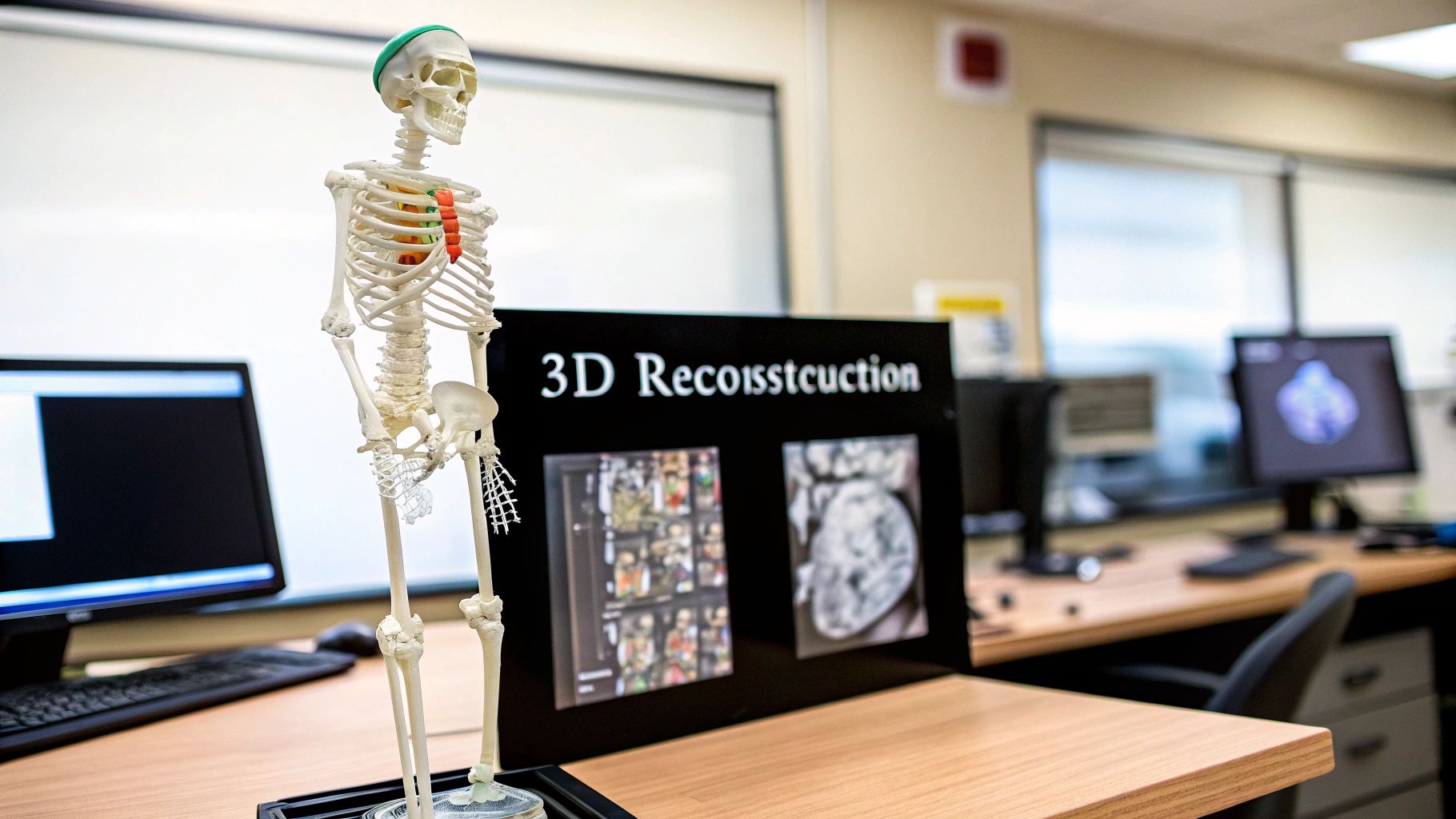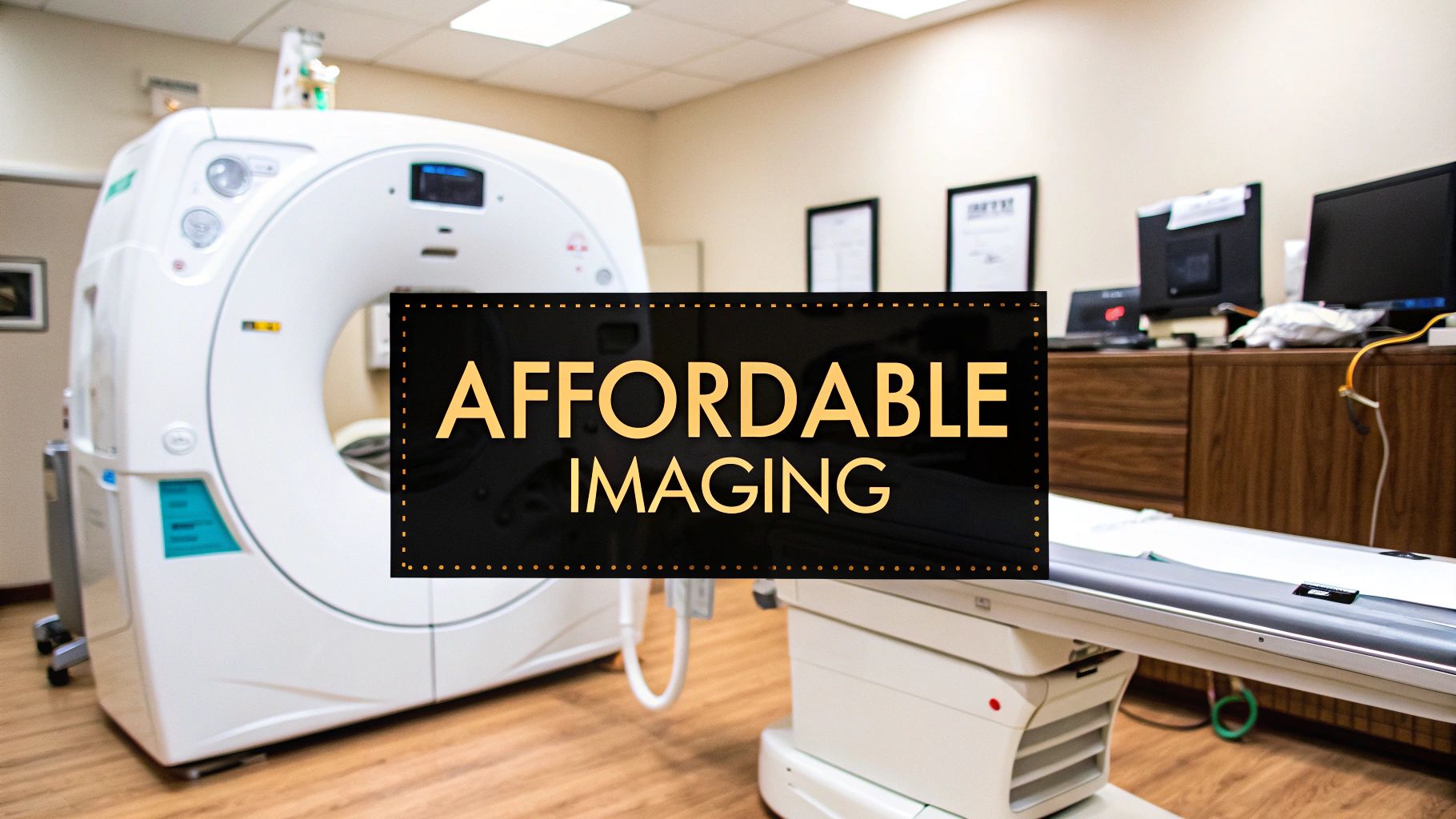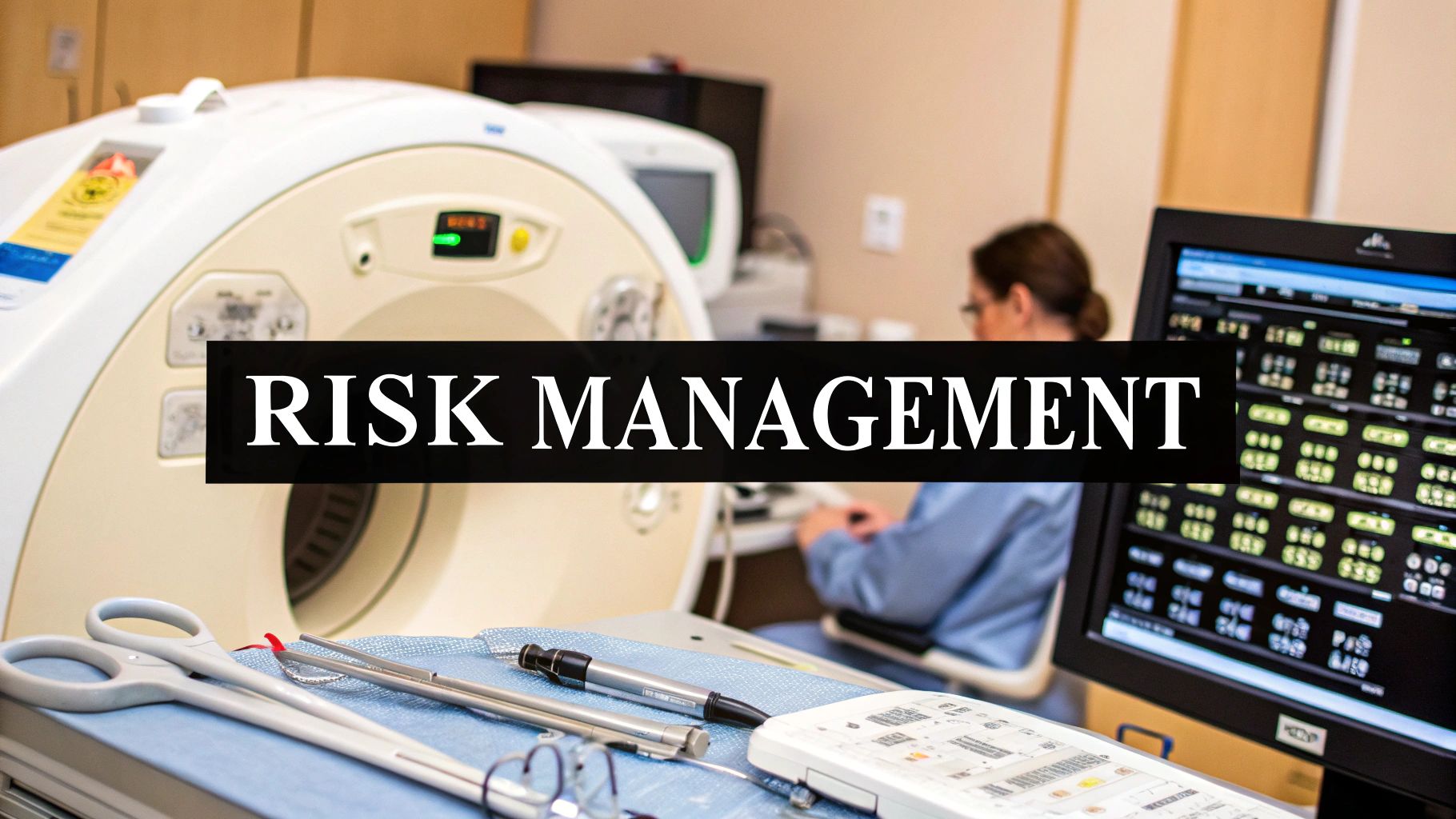The Digital Backbone: Understanding Medical API Fundamentals
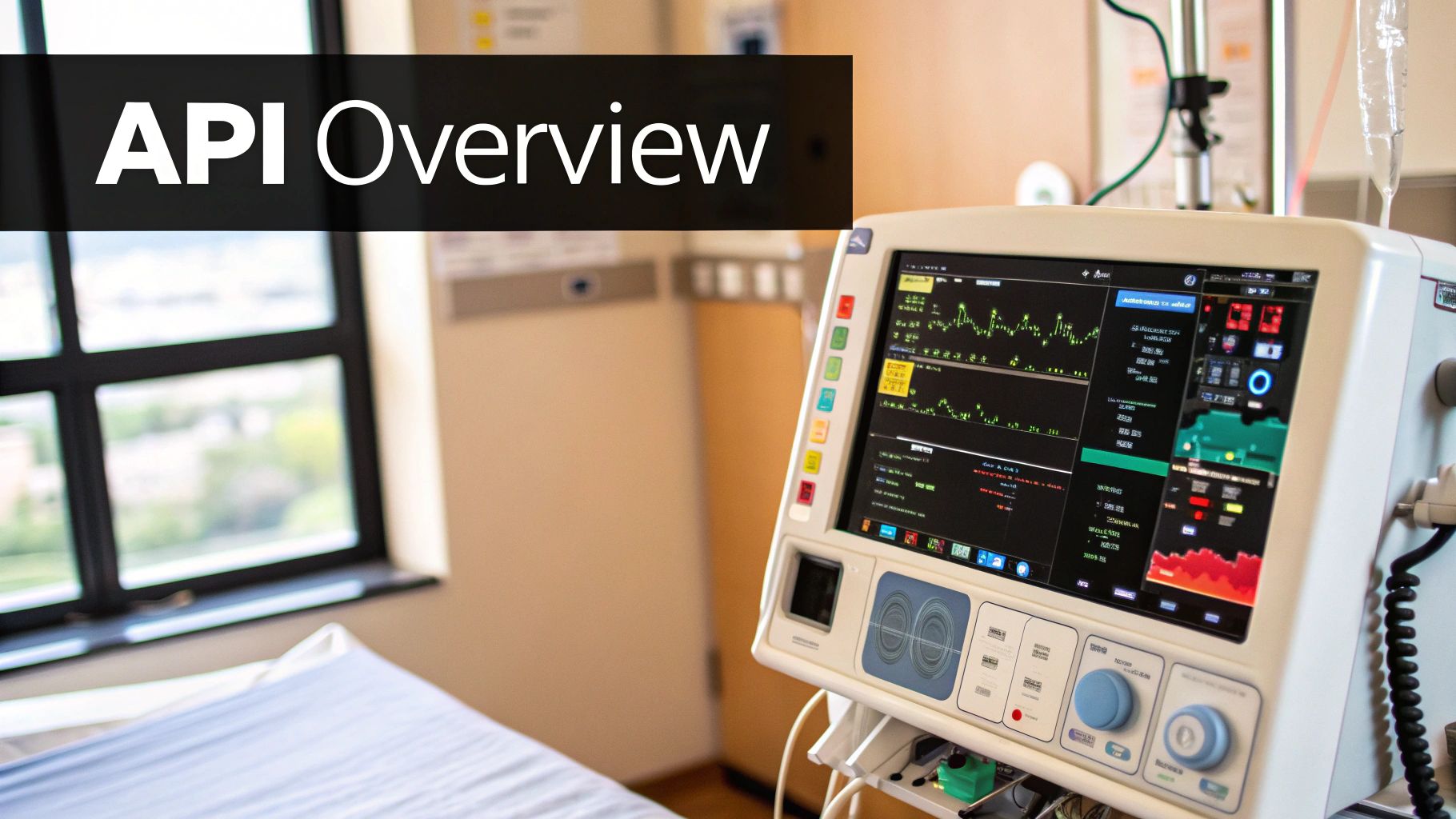
Medical APIs are transforming healthcare. These powerful tools enable seamless communication and data exchange between different systems. They act as the crucial connection between various healthcare applications, devices, and databases. This fosters interoperability and drives innovation in patient care.
Exploring Different Medical API Architectures
Several architectural approaches exist for building medical APIs. RESTful APIs, known for their simplicity and use of standard web protocols, have become a popular choice. RESTful APIs leverage HTTP methods like GET, POST, PUT, and DELETE for interacting with resources.
Another common approach is SOAP (Simple Object Access Protocol). SOAP APIs offer robust security features, but they can be more complex to implement. They use XML for message formatting and rely on protocols like HTTP or SMTP for transport.
The Fast Healthcare Interoperability Resources (FHIR) standard stands out as a significant advancement.
FHIR provides a standardized method for representing and exchanging healthcare data. This promotes interoperability between diverse systems. Data can be shared seamlessly between hospitals, clinics, and other providers, regardless of their specific systems. It's like having a universal language for healthcare information. You can learn more about FHIR.
The Power of Connection: Real-World Applications of Medical APIs
Medical APIs power a wide array of healthcare solutions. They enable secure access to medical records through patient portals. They also allow telehealth platforms to integrate with hospital systems. Furthermore, these APIs empower researchers to analyze vast datasets for medical breakthroughs.
For example, a medical API can connect a patient's wearable fitness tracker to their Electronic Health Record (EHR). This provides doctors with real-time data on activity levels and vital signs, enhancing patient monitoring and care.
This interconnectedness is driving significant growth in the healthcare API market. The global market is projected to grow from USD 243.56 million in 2025 to about USD 337.06 million by 2034, with a CAGR of 3.68%. This expansion is fueled by the rising demand for integrated healthcare systems, the growing adoption of EHRs, and the increasing popularity of telemedicine. More detailed statistics are available here.
Overcoming Challenges and Realizing the Full Potential of Medical APIs
While medical APIs hold immense potential, challenges remain. These include interoperability issues, security concerns, and the complexities of implementation and maintenance.
However, as technology advances and standardization efforts like FHIR gain wider adoption, these challenges are being addressed. The continuous development and refinement of medical APIs will unlock new opportunities for innovation and improve healthcare outcomes.
Medical API Implementation: Measurable Benefits Worth Fighting For
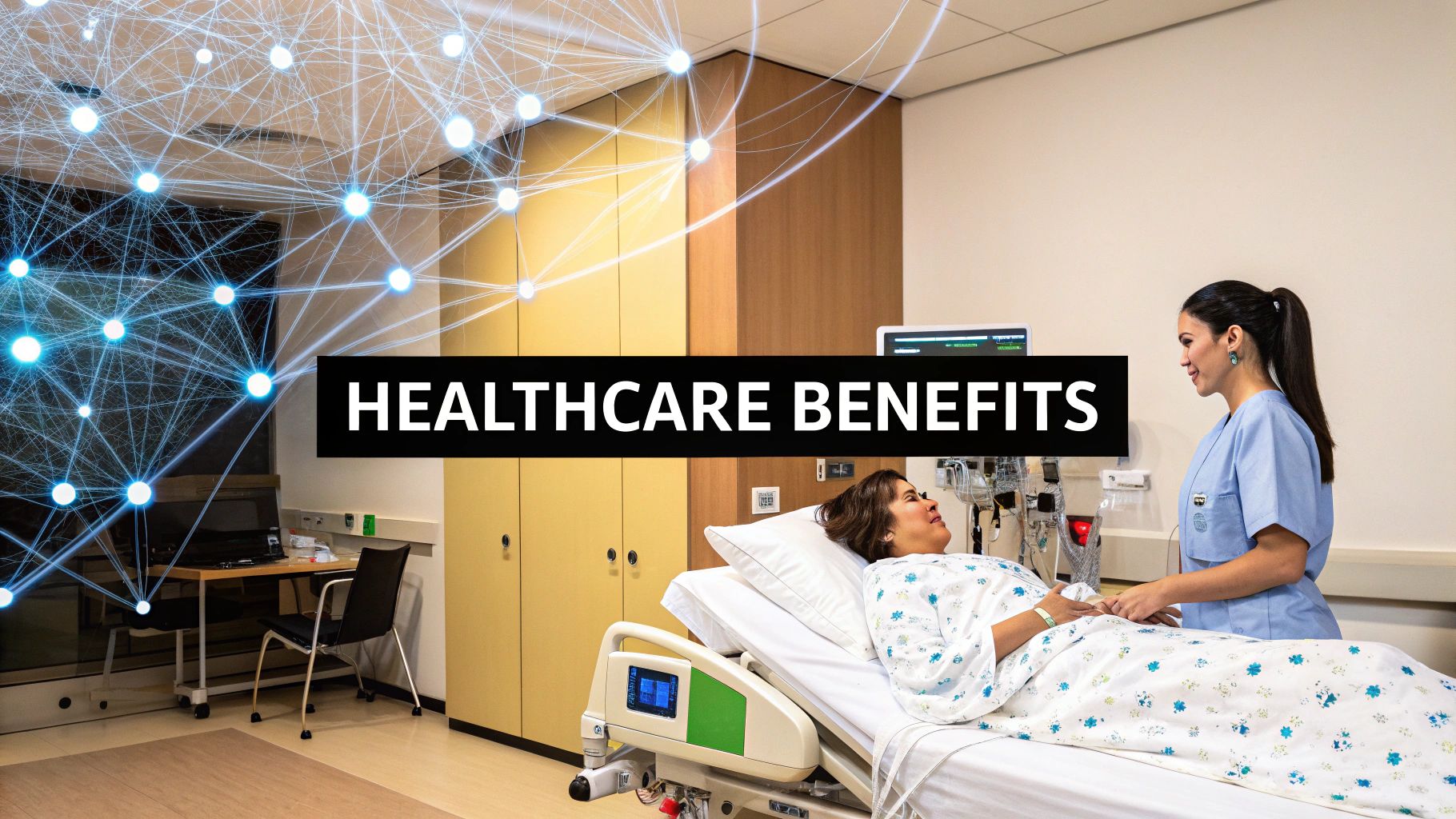
Moving beyond theory, implementing medical APIs offers significant, quantifiable advantages. These benefits translate directly into enhanced operational efficiency, better patient care, and a healthier bottom line.
Quantifying the Impact of Medical APIs
Successful medical API strategies yield measurable results. Leading hospitals have reported a 43% reduction in administrative overhead after implementing robust API-driven systems. This efficiency comes from automating tasks, streamlining workflows, and improving interdepartmental communication. Medical APIs also play a crucial role in care coordination by breaking down data silos that traditionally separated departments.
Healthcare APIs are crucial for improving the efficiency and interoperability of healthcare systems. They enable seamless data integration, allowing developers to access and integrate essential health data into applications, thus driving innovation and efficiency in healthcare technology. For example, APIs like the FHIR framework enhance interoperability among different systems, addressing complex clinical challenges. As of 2023, cloud-based API deployment held the largest market share, around 81.50%. Learn more about this growing market here.
Real-World Transformations: Before and After API Implementation
Examining before-and-after scenarios highlights the power of medical APIs. Before implementation, many healthcare institutions struggle with fragmented systems, manual data entry, and communication bottlenecks.
After integrating medical APIs, these same institutions experience streamlined workflows, improved data accuracy, and enhanced communication. These changes lead to better patient experiences, optimized clinical workflows, and increased operational efficiencies.
Key Considerations For Successful Implementation
Implementing medical APIs requires careful planning and execution. Understanding which approaches yield the highest return on investment (ROI) is critical. Prioritizing integrations that directly address key pain points, such as patient access to records or interoperability between systems, often delivers the greatest initial impact. Focusing on high-value use cases maximizes benefits while minimizing implementation costs.
Recognizing common pitfalls is equally important. Inadequate planning, insufficient security measures, and a lack of stakeholder buy-in can hinder API projects. Successful organizations prioritize thorough planning, robust security protocols, and clear communication with all stakeholders.
This comprehensive approach ensures the final system meets both security and usability needs, creating an accessible and effective solution.
The following table highlights the advantages of Medical APIs for various stakeholders.
Medical API Benefits Across Healthcare Stakeholders
This table breaks down how medical APIs deliver specific benefits to different healthcare stakeholders, from providers to patients.
| Stakeholder | Primary Benefits | Operational Impact | ROI Indicators |
|---|---|---|---|
| Providers | Improved data access, streamlined workflows, enhanced care coordination | Reduced administrative burden, increased efficiency in diagnosis and treatment | Increased patient throughput, reduced operational costs, improved patient outcomes |
| Patients | Easier access to medical records, greater control over health information, improved communication with providers | Enhanced patient engagement, improved medication adherence | Increased patient satisfaction, reduced hospital readmissions |
| Payers | Improved data exchange for claims processing, reduced fraud, better risk management | Streamlined operations, reduced administrative costs | Lower claims processing costs, improved accuracy in reimbursements |
| Researchers | Access to large datasets for analysis, improved collaboration, faster research cycles | Accelerated research and development, improved insights into disease patterns and treatments | Development of new treatments and diagnostic tools, improved public health outcomes |
This table summarizes how medical APIs benefit various healthcare stakeholders, driving improvements in patient care, operational efficiency, and overall healthcare outcomes. By understanding these benefits, organizations can effectively prioritize API integrations to achieve the greatest impact.
Powering Virtual Care: Medical API in Telemedicine
The rapid growth of telehealth has significantly changed how and where healthcare is delivered. Medical APIs are the core infrastructure driving this transformation, enabling everything from virtual consultations to remote patient monitoring. Connectivity is key to reimagining traditional healthcare systems.
Architectures of Leading Telehealth Platforms
Leading telehealth platforms depend on robust and secure architectures built with medical APIs. These APIs enable secure patient authentication, ensuring only authorized access to sensitive health information. Technologies like OAuth 2.0 and OpenID Connect are frequently used to verify patient identities and manage permissions.
Medical APIs also manage the real-time exchange of vital data, including transmitting vital signs from remote monitoring devices, sharing lab results, and enabling real-time video and audio communication during virtual visits. This interconnectedness supports collaborative care.
Furthermore, medical APIs ensure smooth integration with current clinical workflows. They connect telehealth platforms with Electronic Health Record (EHR) systems, enabling providers to access patient history, document virtual visits, and order prescriptions within a single platform, improving overall efficiency.
Bridging the Gap Between Virtual Care and Health Records
Effective integration with existing healthcare systems is critical for the success of telehealth. Medical APIs play a vital role in bridging this gap, ensuring data from virtual visits is seamlessly incorporated into patient health records, maintaining care continuity. This approach prevents data silos and supports a comprehensive understanding of a patient's health journey.
The increasing use of telemedicine and remote patient monitoring has a significant impact on the healthcare API market. These technologies rely heavily on APIs to connect diagnostic tools, patient management systems, and wearable devices. The demand for healthcare APIs is clearly growing, as demonstrated by the rising adoption of telemedicine. For instance, telemedicine use among physicians increased from 15.4% in 2019 to 86.5% in 2021. In addition, approximately 27.4% of medical specialists used telemedicine for at least half of their patient visits. You can find more detailed information here.
Why Some Telehealth Implementations Thrive (And Others Fail)
Some telehealth implementations thrive while others struggle. One key differentiator is the strategic implementation of medical APIs. Platforms that prioritize seamless data exchange, robust security measures, and integration with existing workflows are more likely to succeed.
Conversely, implementations that overlook these factors often face challenges, including data silos, security vulnerabilities, and clinician frustration. These issues can lead to poor user experiences, reduced efficiency, and ultimately, failure to achieve the intended benefits of telehealth. Therefore, a well-defined API strategy is crucial for successful virtual care.
FHIR Mastery: Building Modern Medical API Ecosystems

The Fast Healthcare Interoperability Resources (FHIR) standard is now essential for building modern medical API ecosystems. While FHIR promises seamless data exchange, realizing its full potential requires a well-defined strategy and meticulous implementation. This section explores the advantages of FHIR-based APIs and provides practical guidance for successful integration.
Why FHIR Is a Game Changer for Healthcare Data
FHIR simplifies healthcare data exchange by providing a standardized, resource-based approach. This creates a common language for health information, enabling true interoperability between disparate systems. Imagine a patient's medical records seamlessly transferring between a hospital's Electronic Health Record (EHR) system and their personal health app via a FHIR-based API. This streamlined communication empowers patients with greater control over their own data.
This standardized approach not only facilitates data exchange but also fosters innovation. Developers can build new applications and services that integrate with existing healthcare systems more easily, leading to a richer ecosystem of healthcare solutions.
Migrating from Legacy Systems to FHIR: A Practical Guide
Moving from legacy systems to a FHIR architecture can be challenging, but with careful planning and execution, a smooth transition is possible. This shift requires a structured approach to data mapping and system integration.
- Assessment: Start by thoroughly evaluating your current systems. Identify the key data elements necessary for migration. This initial assessment will form the foundation of your migration strategy.
- Mapping: Carefully map your existing data structures to FHIR resources. Accurate and consistent data representation is crucial for interoperability.
- Implementation: Implement the migration in phases. Begin with a pilot project to test the new system and identify any potential issues before a full-scale rollout. Gradually expand integration across your organization.
- Testing: Rigorous testing of the new FHIR-based medical API is essential. Verify compatibility with existing systems and ensure data integrity.
These steps will help you manage the complexities of migration and minimize disruption to established workflows.
Building Connected Health Ecosystems with FHIR
Forward-thinking organizations are leveraging FHIR to build connected health ecosystems. Using FHIR's resource-based architecture helps break down data silos and enables secure, efficient data flow. This improved interoperability is not just about technical efficiency; it has a direct impact on patient care.
This interconnectivity facilitates collaboration between healthcare providers, giving them a more comprehensive view of patient data. It also powers data analysis for research and quality improvement initiatives, ultimately leading to better health outcomes.
Avoiding Common FHIR Implementation Pitfalls
Successfully implementing FHIR means avoiding common pitfalls. Poor planning, insufficient training, and inadequate stakeholder engagement can derail even the most promising projects.
- Prioritize Thorough Planning: Clearly defined objectives, realistic timelines, and buy-in from all stakeholders are crucial for success.
- Invest in Training: Ensure your staff is adequately trained on using and maintaining the new FHIR-based systems.
- Foster Open Communication: Maintain continuous communication with stakeholders throughout the implementation process.
Addressing these potential challenges proactively will help maximize the benefits of FHIR and lay a solid foundation for future healthcare innovation. The 21st Century Cures Act emphasizes the importance of accessible APIs, highlighting FHIR's role in healthcare interoperability. Learn more about these regulations on the HealthIT.gov website.
Protecting the Pulse: Medical API Security That Actually Works
Security is paramount when dealing with sensitive patient data. Failures in medical API security aren't just compliance issues; they have a direct impact on patient safety and trust. This section explores practical security measures for resilient medical APIs.
Essential Security Frameworks and Protocols for Medical APIs
Strong security relies on established frameworks and protocols. OAuth 2.0, an authorization framework, allows third-party applications limited access to a user's resources without sharing credentials. Think of it as a valet key, granting access to specific functions but not full control.
OpenID Connect (OIDC) builds on OAuth 2.0 by adding an identity layer for authentication. This verifies the user's identity, ensuring the right person accesses the data. It's like a driver's license, confirming your identity before handing over the valet key. OpenID Connect provides a robust solution to verifying user identities.
SMART on FHIR combines these security measures and applies them to the FHIR standard. This creates a secure and standardized way to access and exchange healthcare data via APIs. This ensures secure data flow within the FHIR ecosystem, maintaining patient privacy.
Balancing Security and Usability in Medical API Design
Robust security shouldn't compromise usability. Excessive security can lead to clinician burnout and hinder workflows. The goal is to strike a balance between protecting data and enabling seamless access for authorized users.
Successful organizations design user-friendly authentication processes. They use technologies like multi-factor authentication to enhance security without creating unnecessary hurdles, adding extra protection while minimizing workflow disruption.
Real-World Security Breaches and How to Prevent Them
Analyzing past security breaches provides valuable lessons. Many breaches originate from common vulnerabilities:
- Weak authentication
- Insufficient encryption
- Inadequate authorization controls
For example, a breach might occur if a medical API fails to verify user identities properly. This oversight could allow unauthorized access to patient data. Another scenario involves insufficient encryption, leaving data vulnerable during transmission.
Preventing these scenarios requires a multi-layered approach:
- Implementing strong authentication
- Encrypting data both in transit and at rest
- Enforcing least privilege access controls
This ensures users only access data necessary for their roles, minimizing the impact of a potential breach.
Maintaining Comprehensive Audit Trails for Medical APIs
Thorough audit trails are crucial for monitoring API activity and identifying potential threats. These logs record every API call, providing a detailed history of data access and modifications.
However, simply collecting audit data isn't enough. The data must be actionable. Leading organizations use tools and systems to analyze audit trails, flagging suspicious activity and enabling rapid responses to potential incidents. This proactive approach helps identify and mitigate threats before they escalate.
The 21st Century Cures Act emphasizes accessible APIs and underscores stringent security, specifically mentioning FHIR. You can explore these regulations further on the HealthIT.gov website.
To illustrate the specific security requirements across various regulations, the following table provides a helpful overview:
A detailed table demonstrating the security requirements under various healthcare regulations affecting medical API implementations is provided below.
| Regulation | Authentication Requirements | Encryption Standards | Audit Requirements | Patient Consent Specifications |
|---|---|---|---|---|
| HIPAA | Two-factor authentication, unique user identification | TLS 1.2 or higher, AES-256 encryption at rest | Comprehensive audit trails of all access, modifications, and disclosures | Required for accessing, using, or disclosing PHI |
| GDPR | Strong user authentication, data minimization principles | GDPR doesn't specify encryption standards, but recommends “appropriate technical and organizational measures” including encryption | Data processing records, including purpose, recipients, and storage duration | Explicit consent required for collecting and processing personal data |
| CCPA | Not specifically addressed, but generally aligns with NIST cybersecurity framework | Not specifically addressed, but data security is a requirement | Maintain reasonable security procedures and practices | Right to know, delete, and opt-out of the sale of personal information |
| 21st Century Cures Act | Promotes the use of APIs adhering to FHIR standards for interoperability and patient access | Aligns with NIST recommendations for API security | API usage and data exchange must be auditable | Patient access and control over their health information is central |
This table summarizes the key security and privacy requirements for medical APIs under different regulations, highlighting the importance of robust data protection measures in healthcare.
By prioritizing these security measures, healthcare organizations can protect sensitive patient data, maintain compliance, and build patient trust.
Beyond Today: Medical API Innovations Reshaping Healthcare

The future of healthcare hinges on the continued development of medical APIs. This goes beyond simple enhancements; it represents a fundamental shift in how technology interacts with medicine. This section explores emerging technologies that are reshaping medical APIs and their potential to revolutionize patient care.
AI Integration: Transforming Medical APIs Into Intelligent Clinical Partners
Medical APIs are no longer just pipelines for data. The integration of Artificial Intelligence (AI) is transforming them into intelligent clinical partners capable of predictive analytics and advanced decision support.
For instance, AI-powered medical APIs can analyze patient data to identify those at high risk for developing specific conditions, allowing for early intervention. This predictive capability can significantly improve patient outcomes and reduce healthcare costs.
AI can also enhance the efficiency of medical APIs by automating tasks like data entry and analysis. This allows clinicians to focus on patient care, ultimately improving both the quality and efficiency of healthcare delivery. This shift empowers medical professionals to dedicate more time to direct patient interaction and personalized care.
Blockchain in Healthcare: Addressing Data Challenges With Medical APIs
Blockchain technology provides solutions to longstanding data challenges in healthcare. Medical APIs built on blockchain can improve patient consent management by creating a secure and transparent record of patient authorizations.
This gives patients more control over their health information and builds trust in the healthcare system. This increased transparency also simplifies compliance with regulations like HIPAA.
Furthermore, blockchain can facilitate secure health information exchange between different healthcare providers. By creating an immutable record of data transactions, blockchain-based medical APIs mitigate the risk of data breaches and strengthen the integrity of patient information. This enhanced security benefits the entire healthcare ecosystem.
The Internet of Medical Things (IoMT): Handling Millions of Real-Time Data Points
The Internet of Medical Things (IoMT) generates massive amounts of real-time data, and medical APIs are crucial for managing this influx of information. They provide the necessary infrastructure for connecting various IoMT devices, such as wearable sensors and remote monitoring equipment, to healthcare systems.
This real-time data flow allows for continuous patient monitoring and provides clinicians with valuable insights into patient health. For example, a medical API can connect a patient's smart inhaler to their electronic health record (EHR), alerting physicians to potential issues and enabling prompt interventions. This proactive approach to care management can significantly improve patient outcomes.
Future-Proofing Your API Investments: Strategies for Success
Investing in medical APIs requires a forward-thinking strategy. To future-proof your investments, focus on:
- Flexibility: Choose APIs that can adapt to evolving healthcare standards and technologies.
- Scalability: Ensure your chosen APIs can handle increasing data volumes and user demand.
- Security: Prioritize APIs with robust security features to protect sensitive patient data.
By focusing on these factors, you can maximize the value of your medical API investments and ensure your systems are prepared for the future of healthcare. This proactive approach positions your organization for continued growth and success in the dynamic health landscape.
Investing in a robust and future-proof medical API infrastructure is critical for remaining competitive in the rapidly changing healthcare industry. PYCAD, a company specializing in AI-driven medical imaging solutions, provides comprehensive support from data handling and model training to deployment. They can help you build and integrate APIs that meet the evolving needs of healthcare. Learn how PYCAD can transform your medical imaging workflow by visiting PYCAD.

